If you're looking for a delightful, sweet treat that's also vegan, my Vegan Chocolate Babka recipe is just what you need. This fluffy, soft babka is filled with rich, dairy-free chocolate and crunchy hazelnuts, making it a perfect dessert or breakfast option.
With its brioche-style dough, this vegan babka is not only delicious but also easy to make with simple ingredients you likely already have at home. The combination of sweet, chocolatey goodness and the nutty crunch of hazelnuts is simply irresistible!
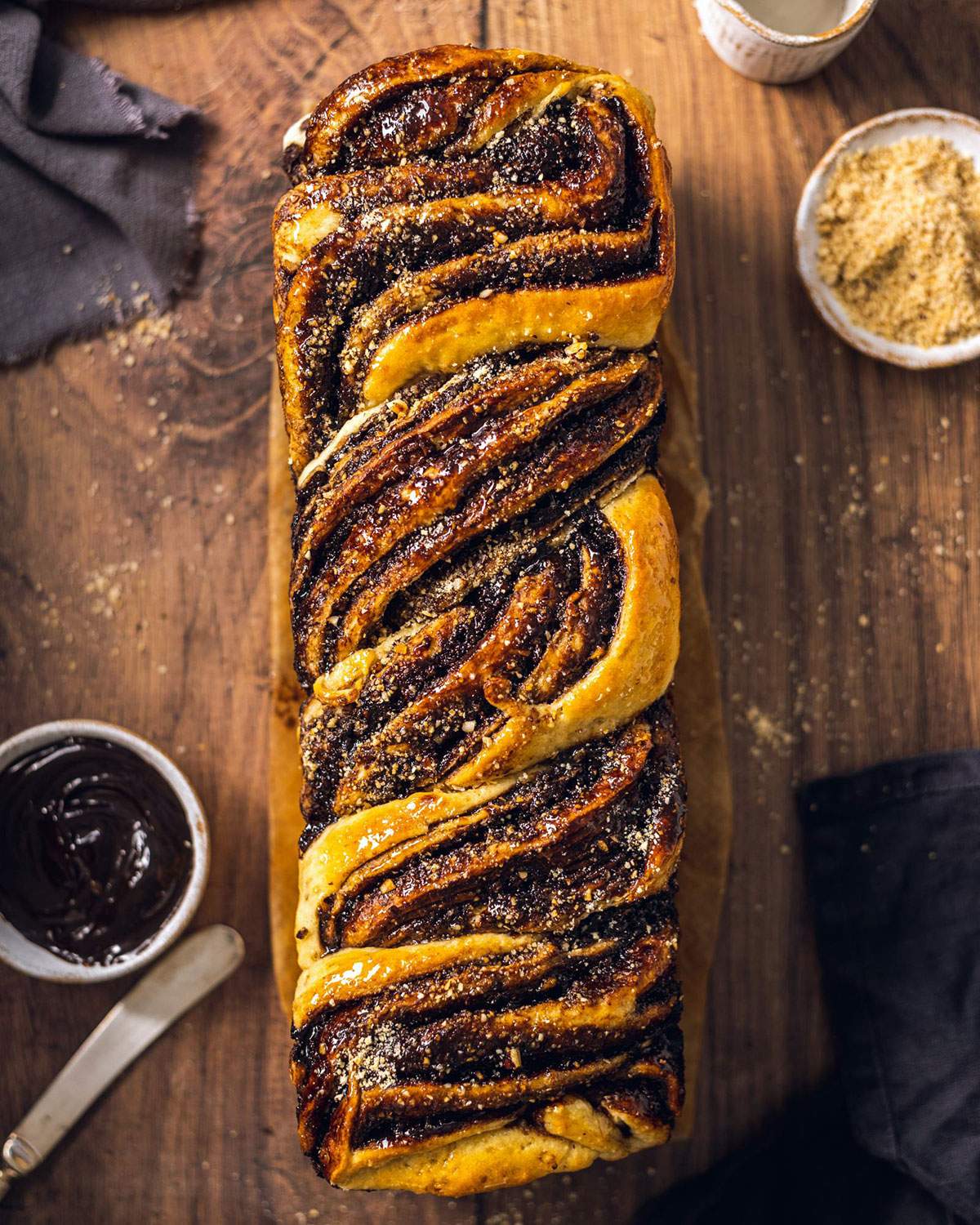
Whilst I'm one-quarter Polish according to Ancestry, I haven't actually made a babka before this Vegan Chocolate Hazelnut Babka Recipe! I like to think it was somehow in my blood though, cause what started as a simple 'I wonder if' test in the kitchen turned out pretty decent upon the first attempt.
In terms of the dough, a traditional babka is pretty soft and fluffy and a well-risen dough all-together - something that is not as easy to create in the absence of milk and eggs.
The dough very much reminds me of a brioche-style - sweet, fluffy, and soft both outside and inside, so in order to create this dough base, I've used a similar technique as with my fluffy vegan brioche-style burger buns.
❤️ What's Great About this Recipe
- Completely vegan and cruelty-free
- Soft and fluffy brioche-style dough
- Rich chocolate and crunchy hazelnut filling
- Made with simple ingredients you already have
- Easy to follow steps, perfect for beginner bakers
- Versatile recipe, easily adaptable with different fillings
- Delicious aroma that fills your kitchen
- Perfect for breakfast or as a dessert
- Impressive bake to share with friends and family
🌱 Ingredients & Notes
Here is everything you need for this recipe:
- Plain Flour - This is your main ingredient for the dough, giving it structure. Make sure to use fine white flour for best results.
- Plant Milk - Acts as a liquid base and helps achieve the soft texture. Unsweetened varieties work best, but you can swap for your favorite plant milk.
- Dry Active Yeast - Essential for dough rising. Check the expiration date to ensure your yeast is fresh.
- Caster Sugar - Sweetens the dough slightly and helps with browning. Regular granulated sugar can be used if needed.
- Sea Salt - Balances the sweetness and enhances flavors. A pinch is all you need.
- Rapeseed Oil - Adds moisture to the dough without making it heavy. Canola or sunflower oil are good alternatives.
- Vegan Chocolate Spread - The star of the filling! Choose a dairy-free option for a true vegan babka.
- Crushed Hazelnuts - Add a tasty crunch and nutty flavor. Feel free to use other nuts like almonds or pecans.
- Maple Syrup or Agave Nectar - Used for the vegan “egg wash” and finishing glaze. Adds a sticky, sweet gloss to your babka.
Scroll to the recipe card at the bottom of the post for detailed quantities and measurements.
🔪 Equipment
Here is all the equipment you need to make this recipe:
- Mixing Bowl
- Jug
- Non-stick Saucepan - Important for making the Tangzhong without it sticking or burning.
- Spatula
- Whisk
- Rolling Pin
- Loaf Tin - Make sure it's the right size to fit the babka after shaping.
- Sharp Knife - Needed for slicing the rolled dough cleanly.
How to Create Vegan Brioche Dough
The dough used for a babka is similar to brioche, with a soft and fluffy texture throughout. Creating this type of dough in a vegan version can be challenging, as soft and fluffy bakes typically rely on eggs or milk.
However, there are ways to achieve a vegan brioche-style dough - either through specific ingredients (such as aquafaba) or through the dough preparation process.
In this recipe, we create the desired texture using a simple technique called "Tanzhong". In this technique, we mix flour with plant milk, then heat it until it forms a sticky, thick paste. This paste is then combined with the remaining ingredients. This method allows the dough to hold together while the yeast rises, resulting in a soft and fluffy texture throughout the babka.
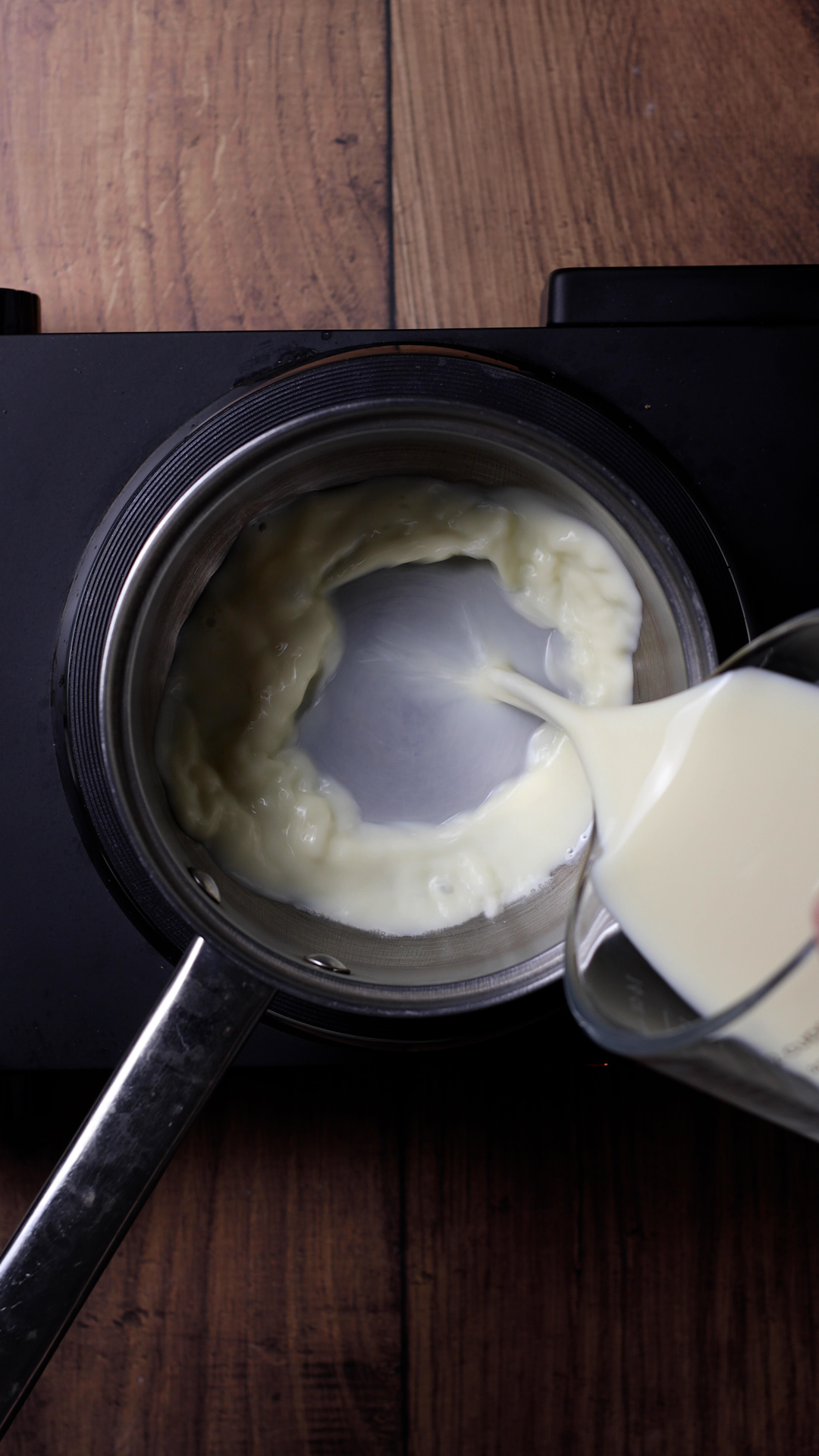
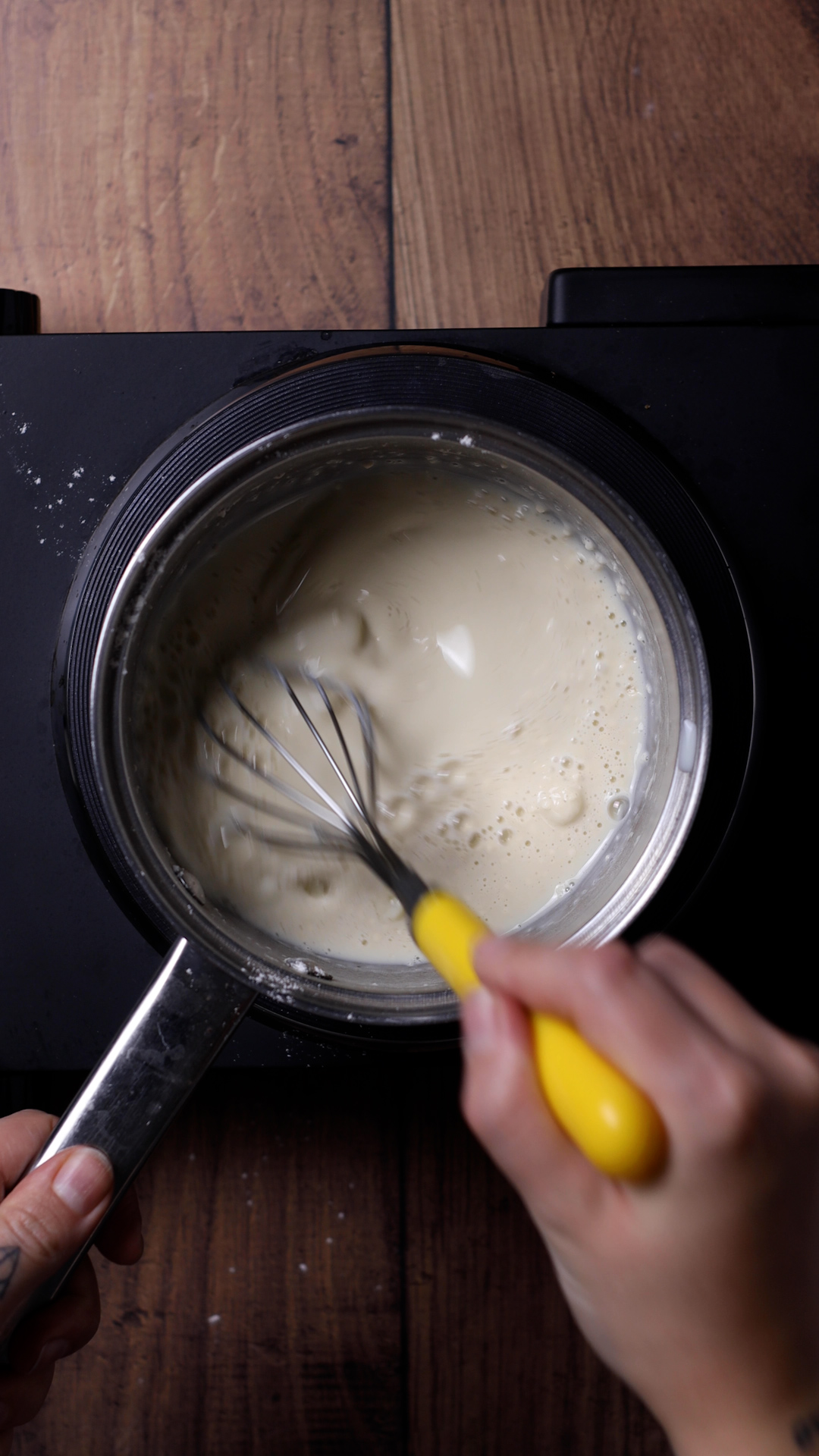
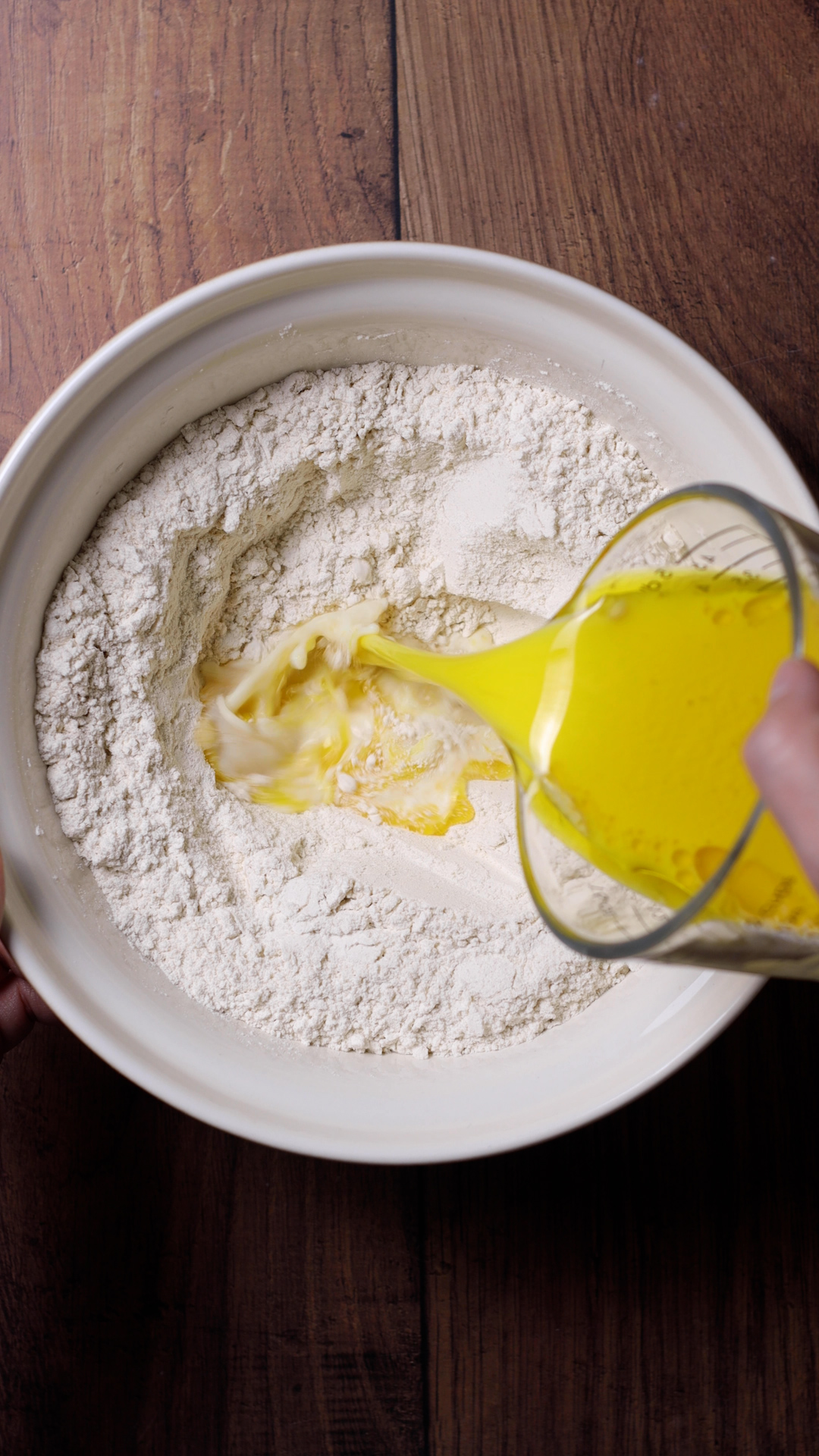
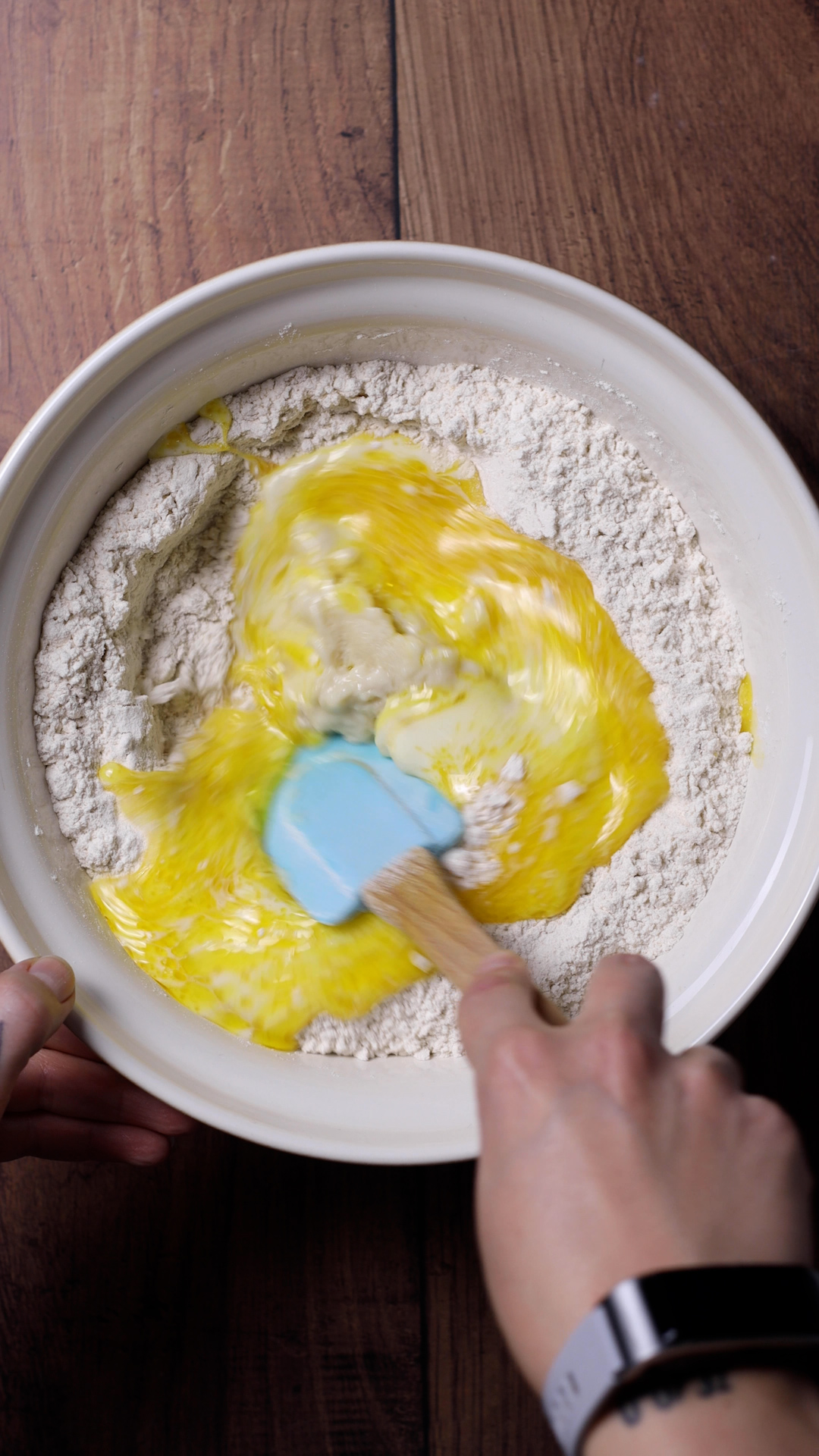
🧑🍳 Instructions (Step-by-Step)
Prepare the Tangzhong
- In a non-stick saucepan, combine 40g of plain flour with 180ml of unsweetened plant milk.
- Heat over low heat, stirring constantly until it thickens to a paste.
- Remove from heat and let it cool.
Mix Dry Ingredients
- In a large mixing bowl, combine 420g plain white flour, 40g caster sugar, 14g dry active yeast, and a pinch of sea salt.
Combine Wet Ingredients
- In a jug, mix 160ml plant milk at room temperature with 40ml rapeseed oil.
Form the Dough
- Create a well in the dry ingredients and pour in the contents of the jug along with the cooled Tangzhong.
- Mix with a wooden spatula until the dough forms.
- Transfer to a lightly floured surface and knead until soft and smooth.
First Rise
- Place the dough in a greased bowl, cover, and let it rise in a warm place for 1 hour.
Roll and Fill
- Once risen, knead the dough briefly, then roll it out to about 0.5 cm thickness.
- Spread vegan chocolate spread over the dough and sprinkle with crushed hazelnuts.
Shape the Babka
- Roll the dough lengthwise into a log.
- Slice down the middle of the roll to create two halves.
- Twist the halves around each other to form the babka shape.
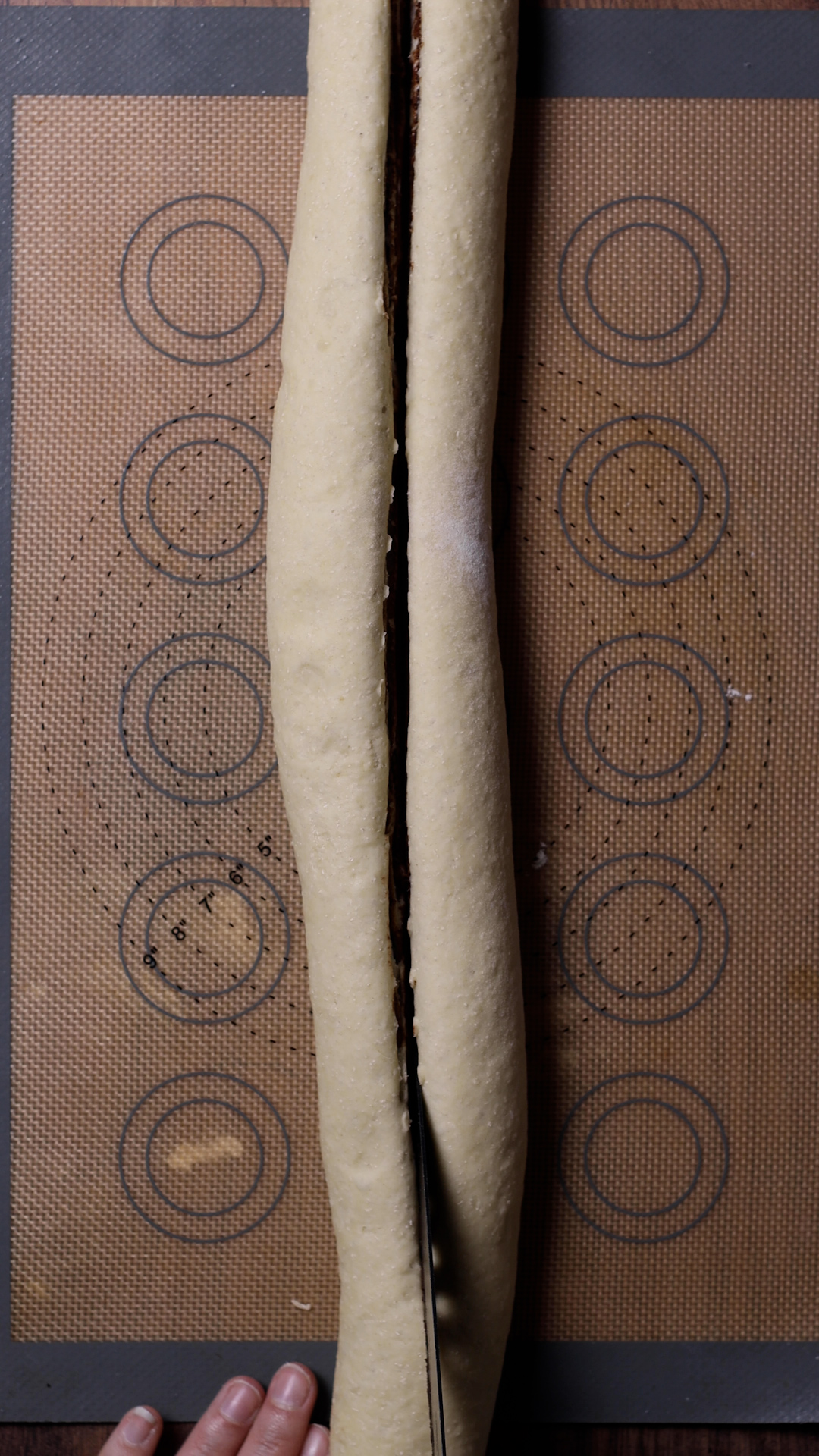
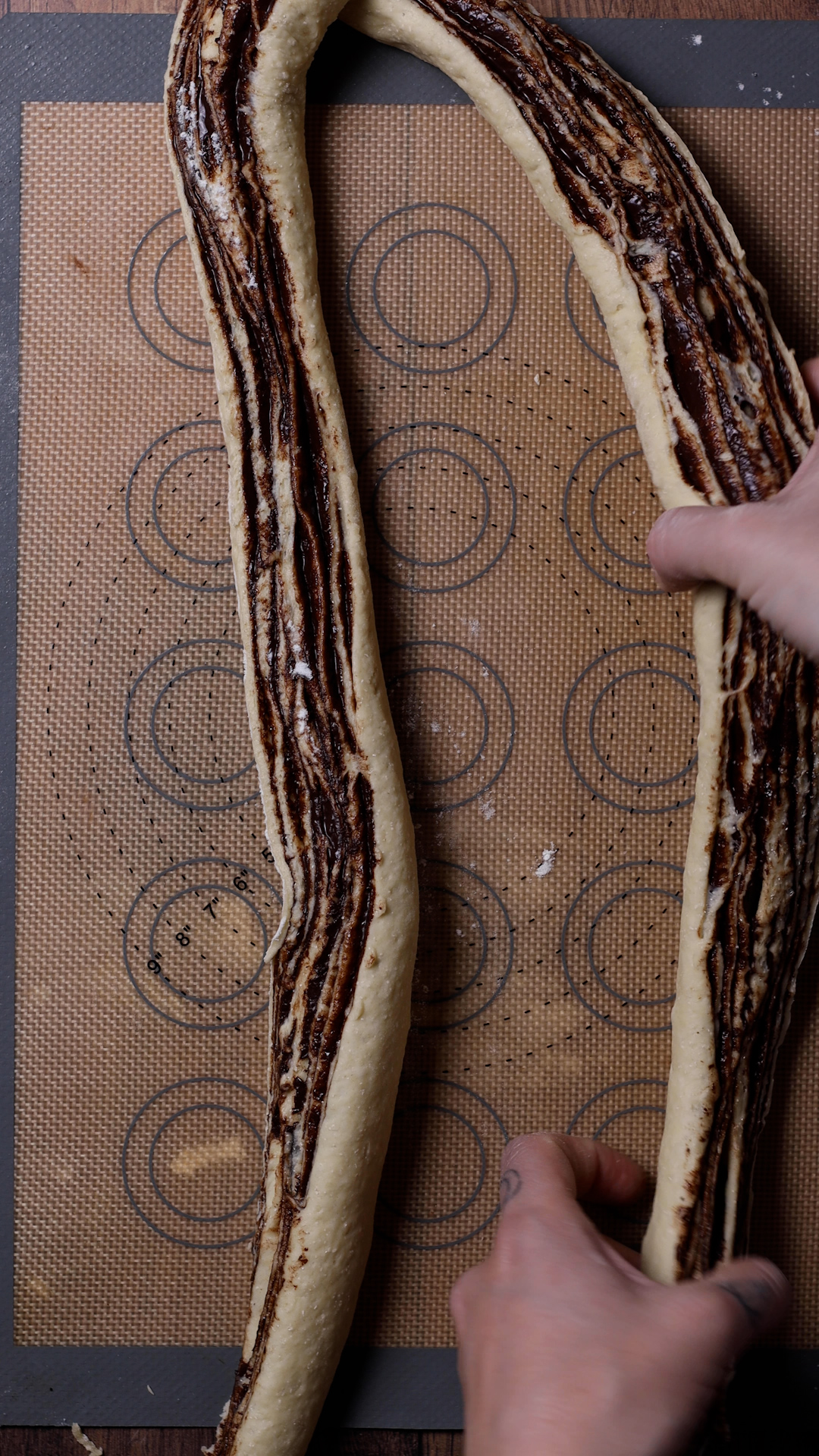
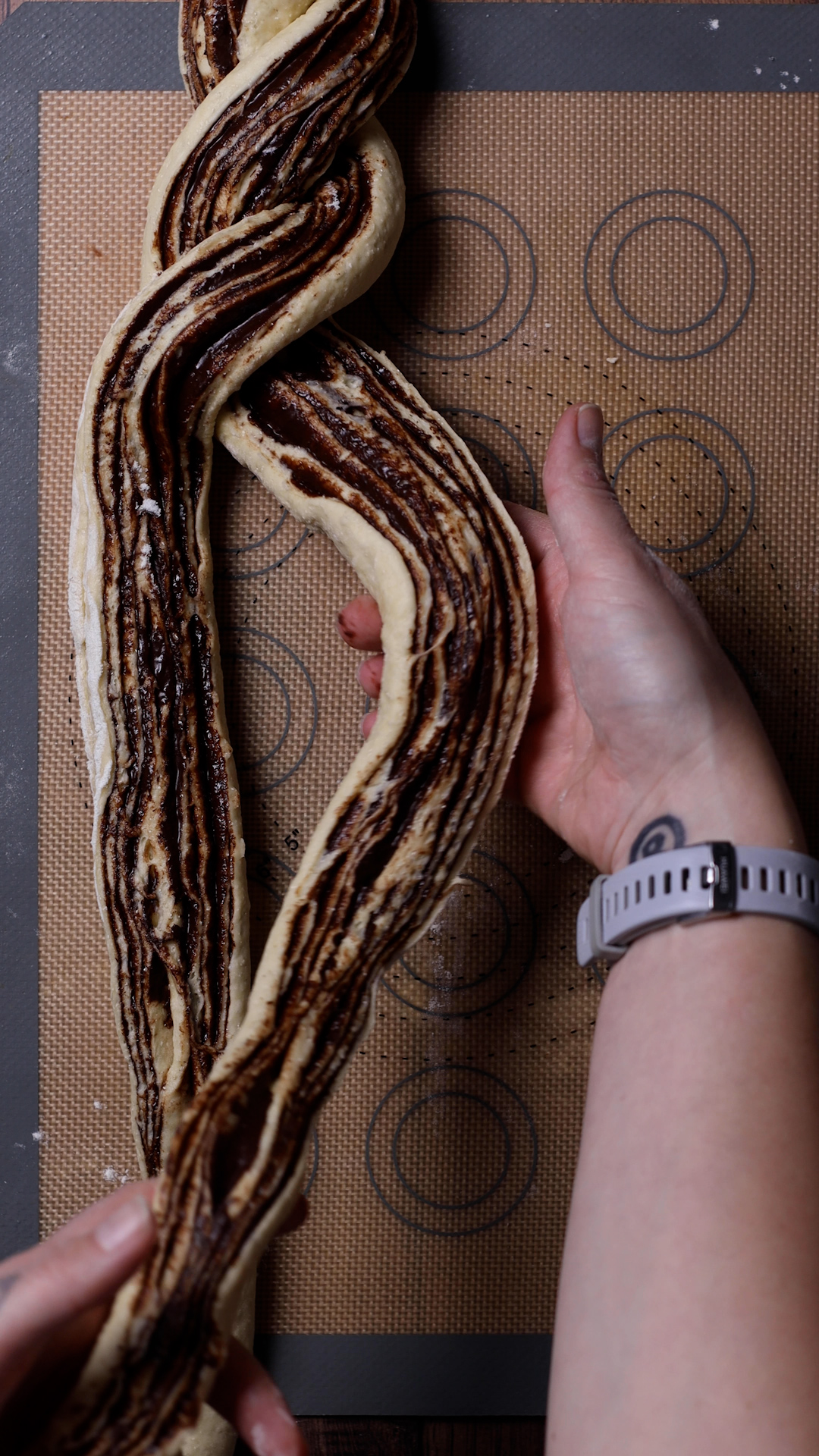
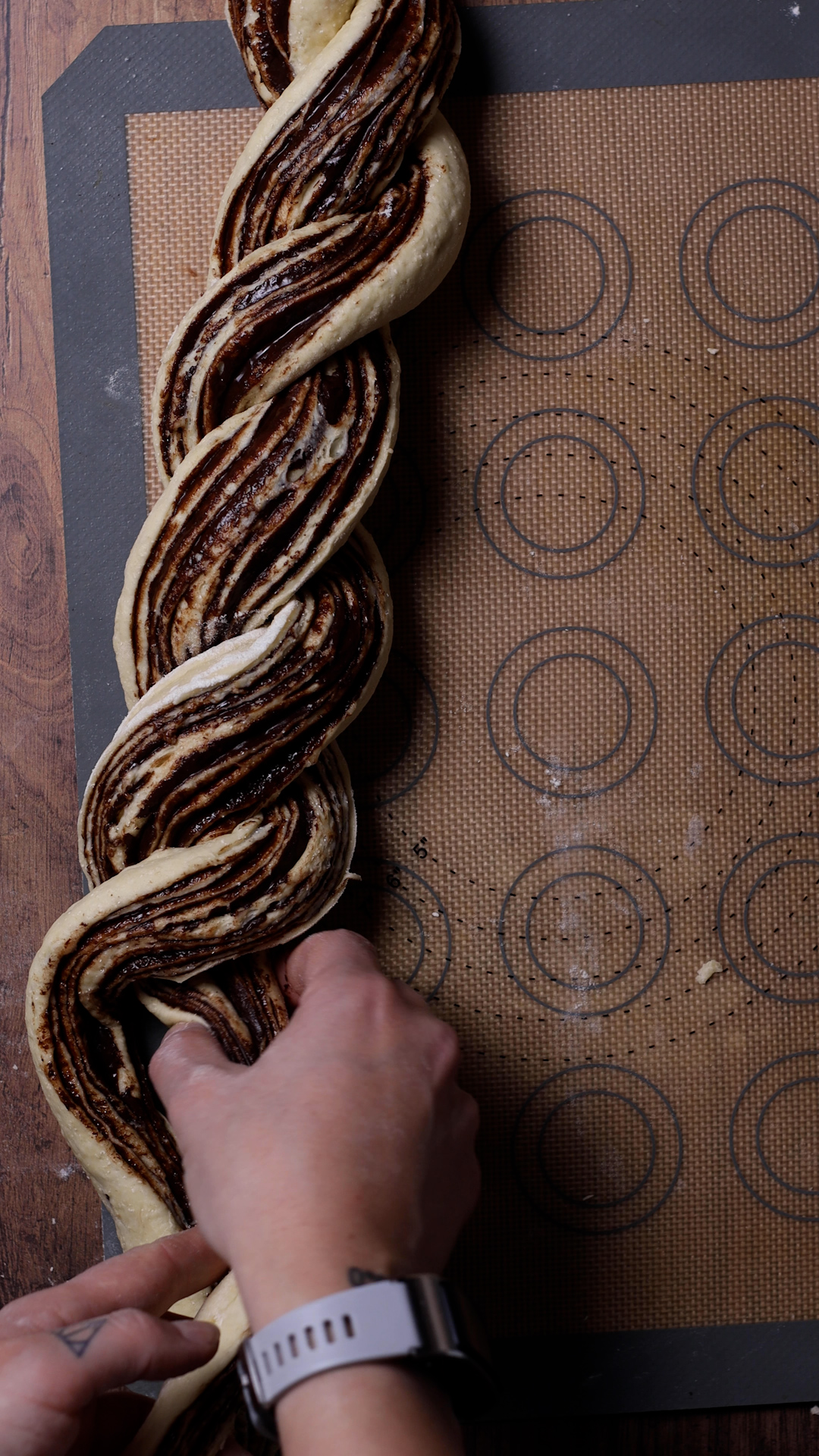
Second Rise
- Place the twisted dough in a lined loaf tin.
- Cover and let it rise for another 30 minutes.
Bake
- Preheat the oven to 190°C.
- Brush the dough with a vegan "egg wash" made of 1 tablespoon maple syrup and 3 tablespoons plant milk.
- Bake for 20-25 minutes until golden brown.
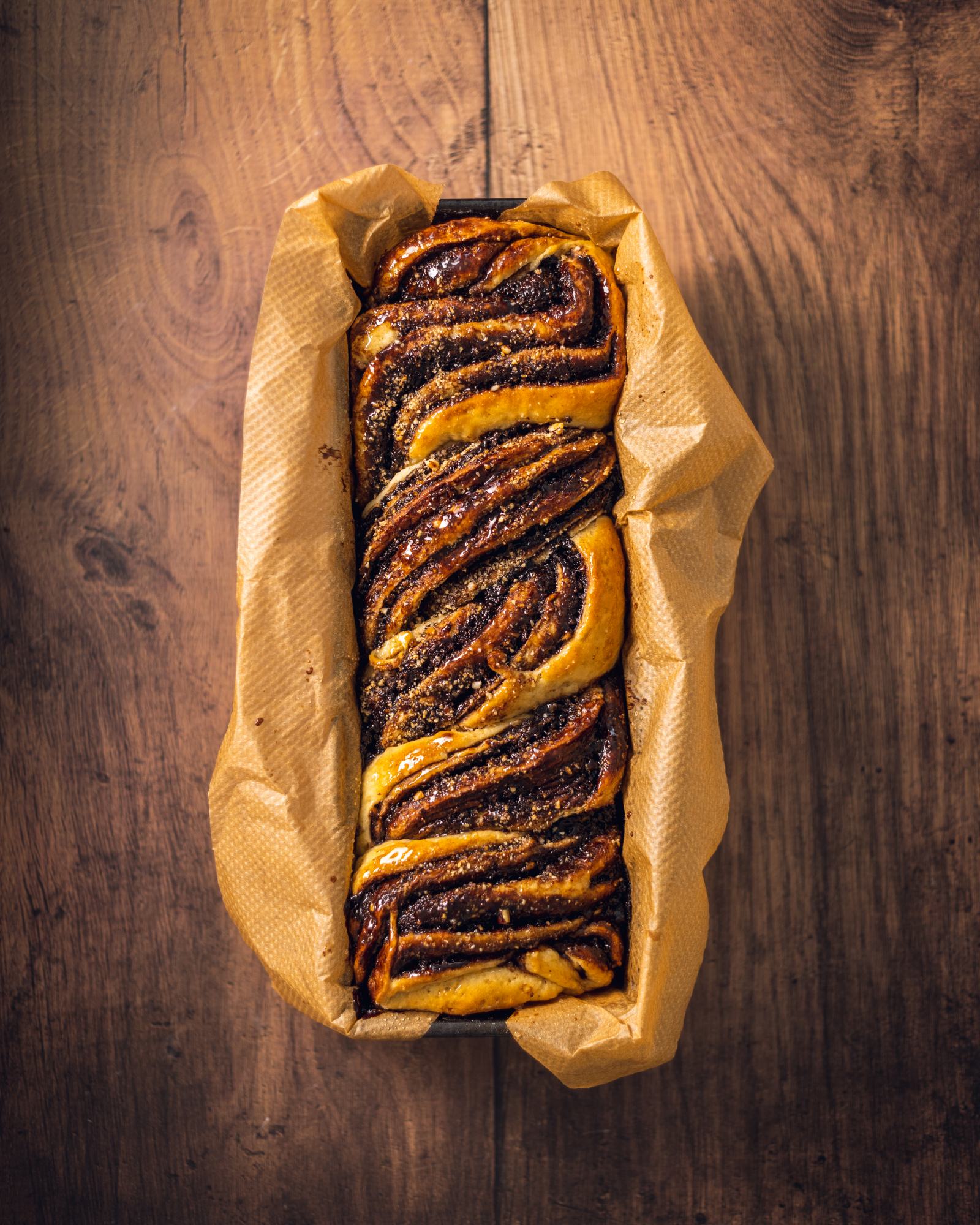
Step - Finish and Serve
- Remove from the oven and drizzle with agave nectar for a sticky finish.
- Let cool in the tin for at least 20 minutes before serving.
Enjoy your Vegan Chocolate Hazelnut Babka warm or cold!
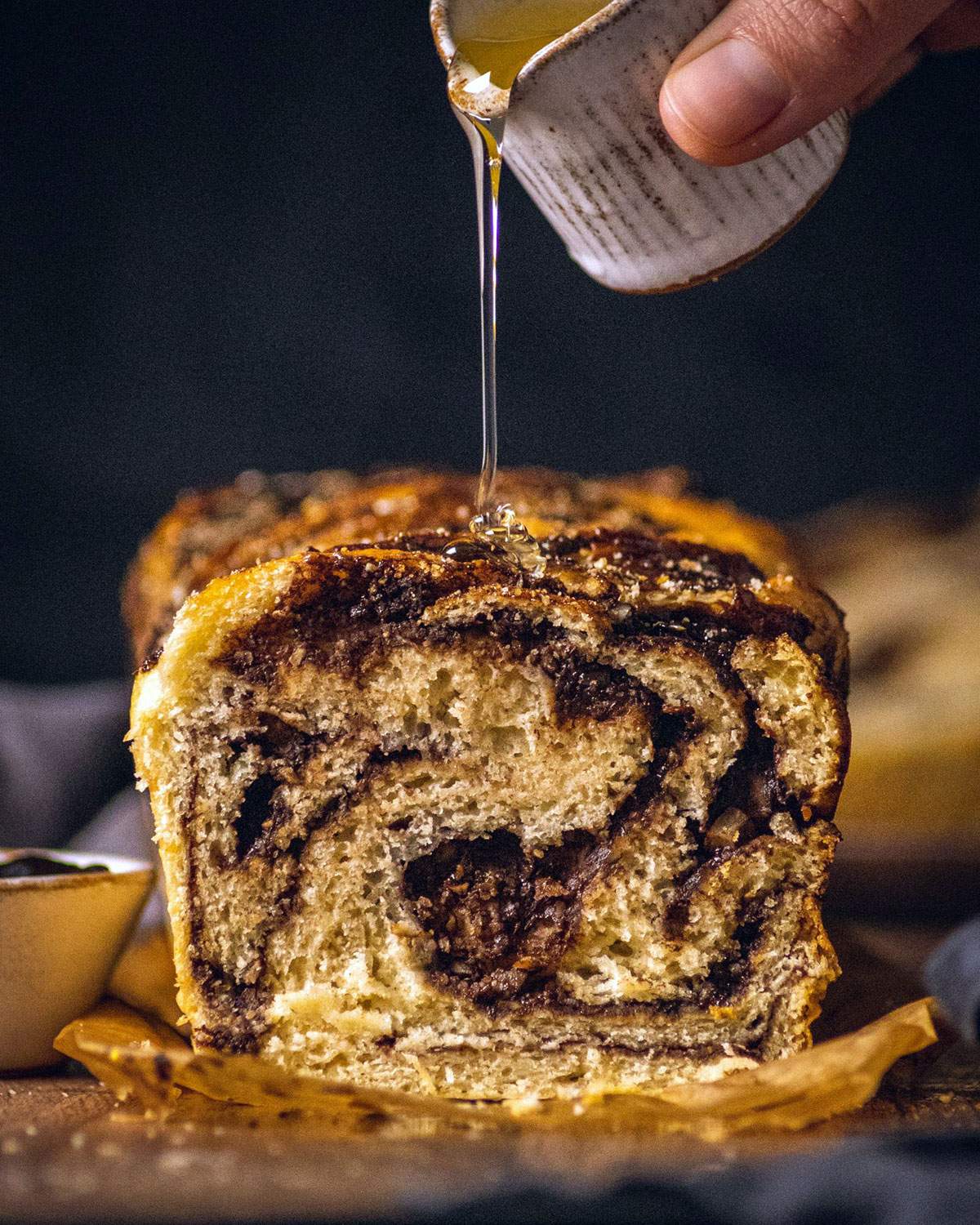
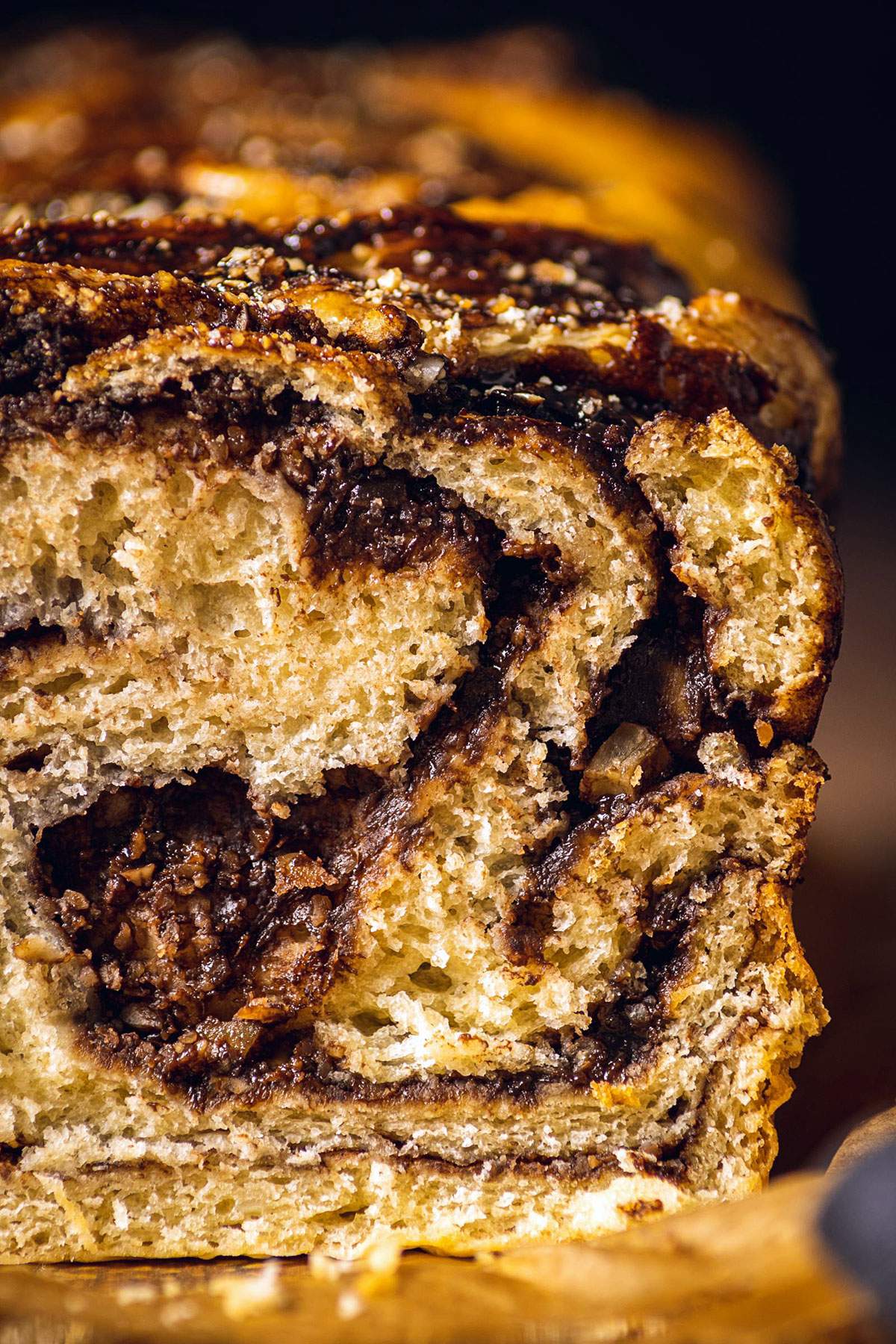
📌 If you love Pinterest you can pin any of the images to your boards!
🍽️ Serving
Slice the babka into thick pieces. Enjoy it warm or at room temperature. Pair it with a cup of coffee or hot tea for breakfast. For dessert, serve it with a scoop of vegan ice cream. Share with friends for a cozy gathering.
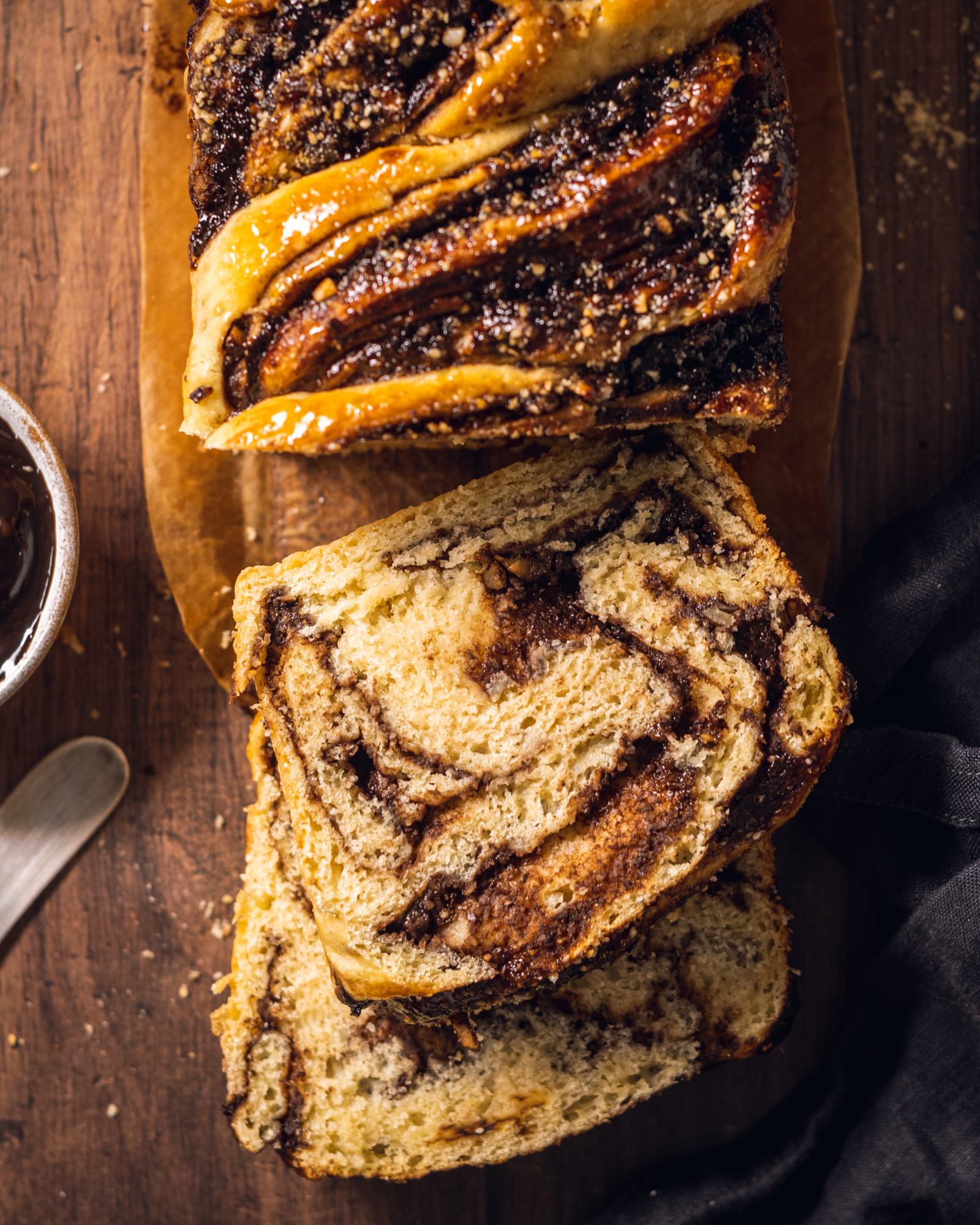
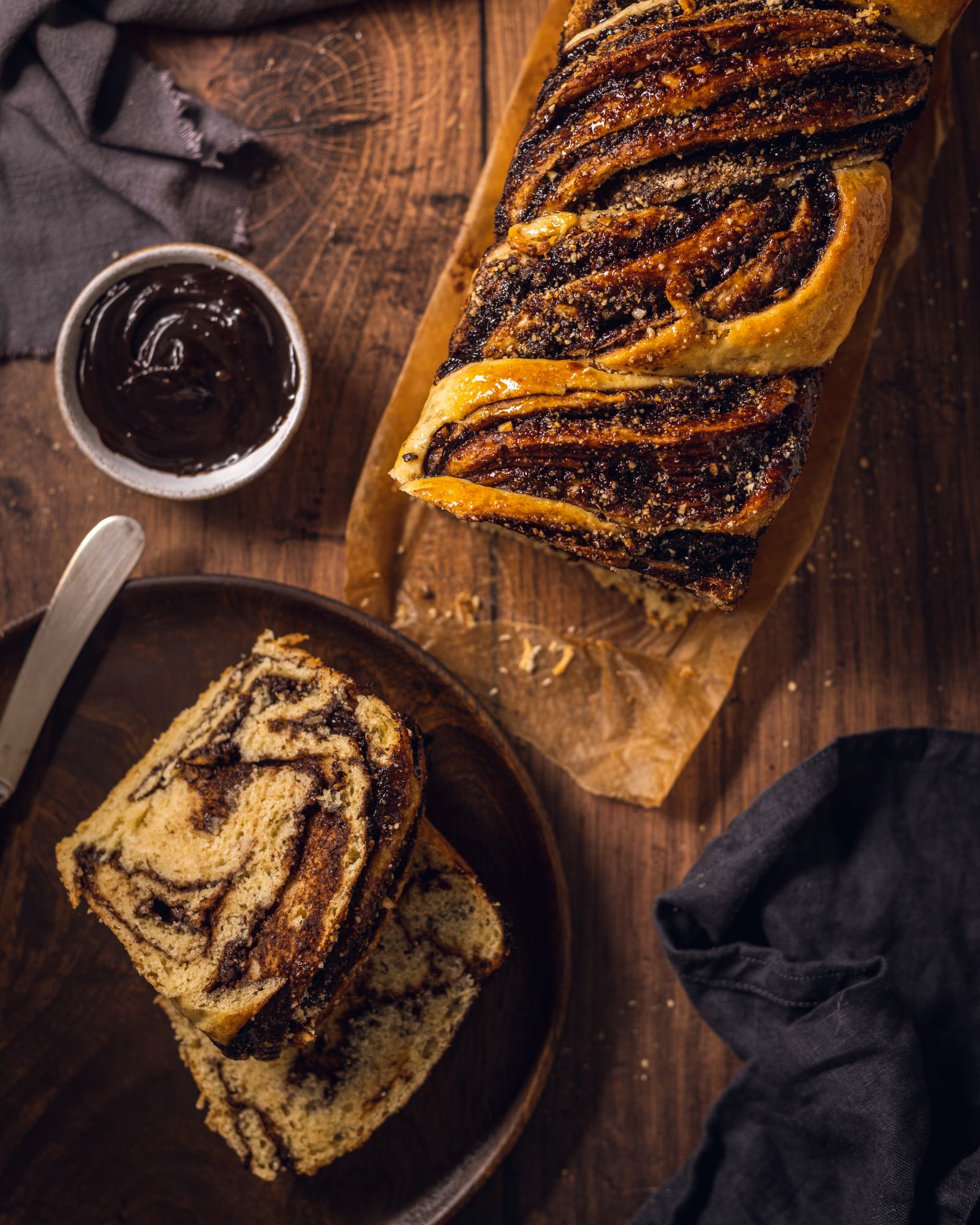
❄️ Storage
To store any leftover babka, wrap it tightly in foil or plastic wrap. Keep it at room temperature for up to 3 days. For longer storage, pop it in the fridge for up to a week.
How to reheat
When you're ready to enjoy it again, reheat slices for a few minutes in a preheated oven at 150°C (300°F) or give them a quick zap in the microwave for 15-20 seconds. Be careful not to overheat, or it might get too soft. Enjoy!
Did you make this recipe? If so, will you do me a huge favor and leave a review and rating & let me know how you liked this recipe? THANK YOU! ❤️
Here's a handy recipe card that you can print out and keep in your kitchen for easy reference:
📖 Recipe Card
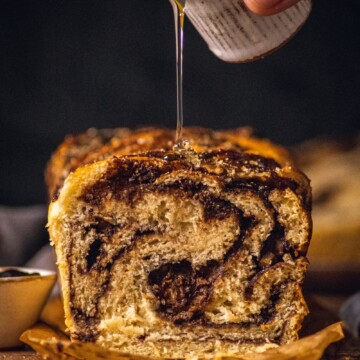
Vegan Chocolate Hazelnut Babka Recipe
Ingredients
For the Tangzhong:
- 40 g plain flour
- 180 ml unsweetened plant milk
The rest of the ingredients:
- 420 g plain white flour
- 2 sachets of dry active yeast 2 x 7g, 14g in total
- 40 g caster sugar
- a pinch of sea salt
- 160 ml unsweetened plant milk at room temperature
- 40 ml rapeseed oil
For the filling:
- Vegan Chocolate spread roughly 2-3 tablespoons
- crushed hazelnuts
Vegan “egg wash”:
- 1 tablespoon maple syrup or agave nectar
- 3 tablespoon plant milk
- Plus agave nectar to coat the babka after baking.
Instructions
- In a large mixing bowl combine 420g plain flour, sugar, yeast, and salt. In a separate jug combine plant milk and oil.
- Add 40g of plain flour and 180ml plant milk to a non-stick saucepan and heat over low heat. Stir continuously until the mix begins to thicken. Remove from the heat.
- Create a well in the dry ingredients, pour in the contents of the jug as well as the Thangzhong. Combine all ingredients with a wooden spatula, then transfer the dough to a lightly floured surface and knead until soft and smooth.
- Place the dough ball into a greased bowl, cover and leave to rise for 1 hour in a warm place.
- Once the hour elapses, knead the dough again for 1 minute, then roll it out on a floured surface to about half a centimetre thickness.
- Spread the vegan chocolate spread on top and sprinkle with the crushed hazelnuts.
- Gently roll up the dough lengthwise and carefully slice it down the middle of the roll.
- Carefully fold the babka by lifting the right string over the right. Repeat until the entire babka is knitted, gently squish the top and bottom of the babka to get it into a denser shape. Transfer to a lined loaf tin, cover and let it rise for another 30 minutes.
- Brush with the vegan 'egg' wash, then transfer to a pre-heated oven and bake at 190C for 20-25 minutes or until golden.
- Remove from the oven and drizzle with a little agave nectar for a sticky coating. Allow to cool for at least 20 minutes before removing the babka from the tin.
- Enjoy warm or cold.
Notes
- Serving Suggestions: This Vegan Chocolate Hazelnut Babka is delightful on its own but can also be served with a dollop of dairy-free whipped cream or a scoop of vegan ice cream for a decadent dessert. For a breakfast treat, pair it with a hot cup of coffee or tea.
- Storage Tips: Store the babka in an airtight container at room temperature for up to 3 days. For longer storage, wrap it tightly in plastic wrap and keep it in the refrigerator for up to a week.
- Reheating Instructions: To enjoy the babka warm, reheat slices in a preheated oven at 150°C for about 5 minutes or until warmed through. Alternatively, use a microwave for 15-20 seconds, but be cautious as it can become too soft if overheated.
- Extra Tips:
- For an extra touch, sprinkle some powdered sugar on top before serving.
- If you prefer a richer flavor, try adding a teaspoon of vanilla extract to the dough.
- Experiment with different fillings such as fruit preserves or nut butters to customize your babka.
- Ensure the dough rises adequately during both proofing stages for the perfect fluffy texture.
Looking for more vegan bakes? Try out these:
© 2025 Romy London / Romina Callwitz | All images, videos, wordings and content are copyright protected and belong to Romina Callwitz. Please do not use any of my content without prior permission. If you wish to re-publish any (part of my) content, please get in touch via email. Thanks for your support!
*Disclosure: This page may contain affiliate links and sponsored links that earn me a small commission, at no additional cost to you. You can find more information in my Privacy Policy.


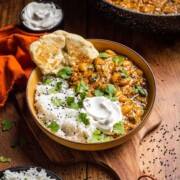
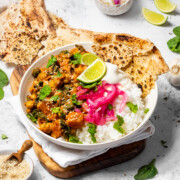
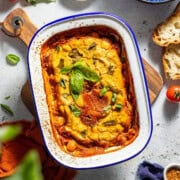

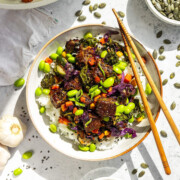
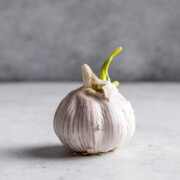
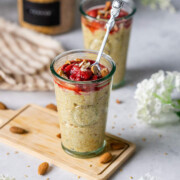
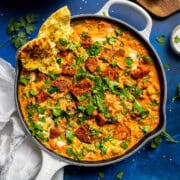
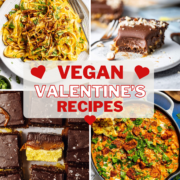
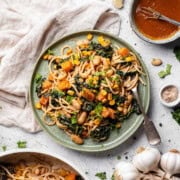
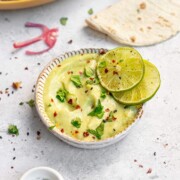
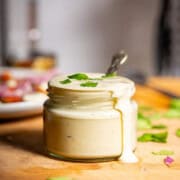
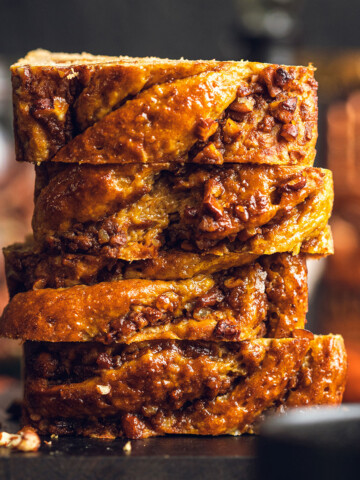
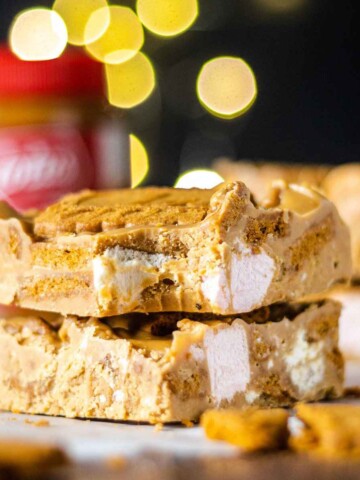
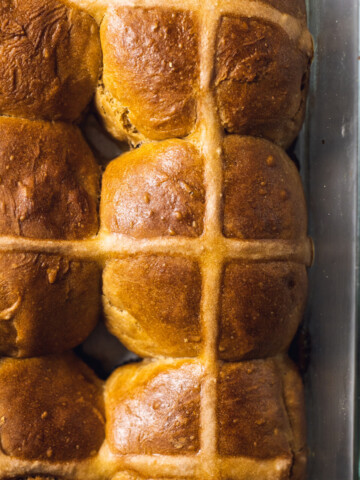
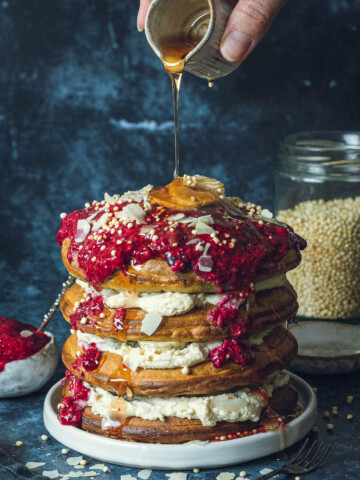
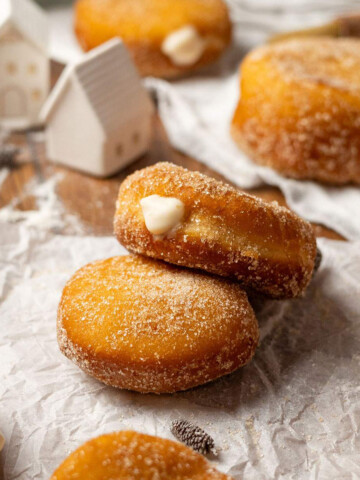
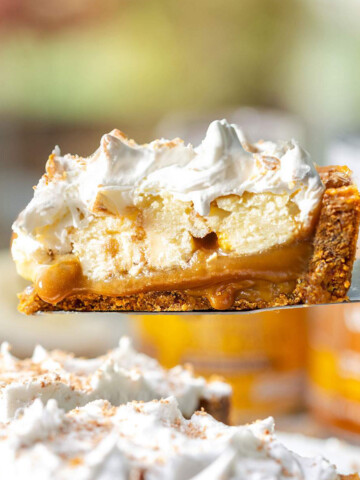
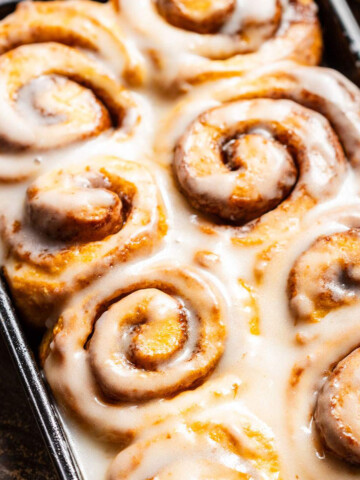
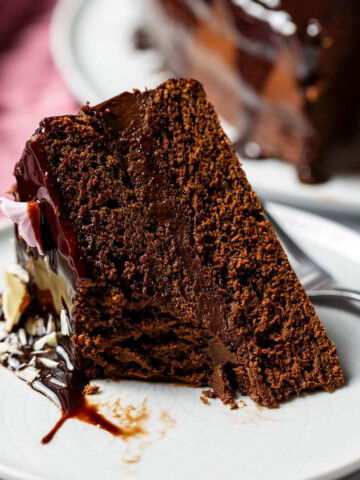
💭 Leave a Comment